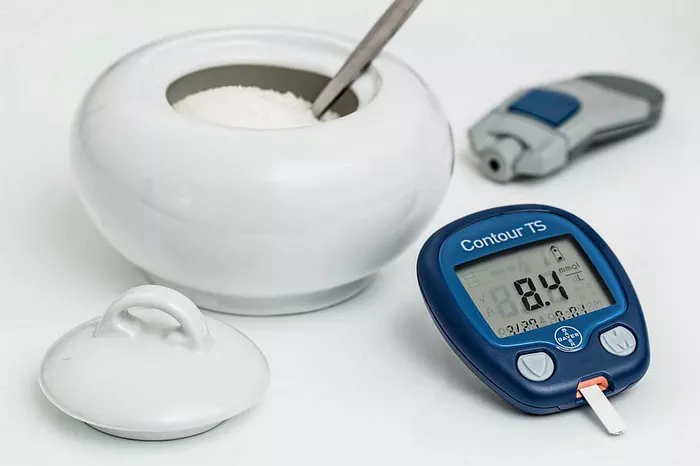Managing blood sugar levels is a critical component of diabetes care. Whether you’re newly diagnosed or have been living with diabetes for years, one question that frequently arises is, What should blood sugar be before lunch? Blood glucose levels fluctuate throughout the day depending on various factors such as food intake, physical activity, medications, stress, and illness. Understanding the optimal range for blood sugar before meals, especially before lunch, is vital for preventing both short-term and long-term complications related to diabetes.
In this article, we will explore the factors influencing blood sugar levels, the recommended target ranges for blood glucose before lunch, and the best practices for managing blood sugar effectively throughout the day. We will also discuss the importance of consistent monitoring and offer tips for achieving balanced blood glucose levels.
The Importance of Monitoring Blood Sugar
Blood sugar monitoring is essential for people with diabetes, as it helps them understand how their body is responding to different foods, activities, medications, and other variables. This allows for better management of diabetes and helps in preventing complications such as heart disease, nerve damage, kidney problems, and poor circulation. The ultimate goal of blood sugar management is to keep glucose levels as close to normal as possible, ideally within a target range recommended by a healthcare provider.
Before diving into the specifics of what blood sugar should be before lunch, it’s important to understand the role of glucose in the body. Glucose is the body’s primary source of energy, derived mainly from carbohydrates in food. After meals, glucose enters the bloodstream, and the pancreas releases insulin to help cells absorb it. In people with diabetes, either the body doesn’t produce enough insulin or the insulin produced is not effective at moving glucose into cells, leading to elevated blood glucose levels.
Consistently high or low blood sugar levels can cause various symptoms, ranging from fatigue and dizziness to severe complications like diabetic ketoacidosis (DKA) or hypoglycemia. Therefore, monitoring blood sugar regularly can prevent these extreme outcomes and promote overall well-being.
Blood Sugar Targets for Pre-Meal Testing
Before breakfast, before lunch, and before dinner, blood sugar levels are typically measured to get an accurate reflection of the body’s insulin response before any food intake. For individuals with diabetes, maintaining blood sugar within target ranges before meals is crucial for overall diabetes management.
Blood sugar targets can vary based on the type of diabetes, the individual’s treatment plan, and the recommendations of their healthcare provider. However, here are some general guidelines for pre-meal blood sugar targets for people with diabetes:
Normal Range (for non-diabetic individuals): For someone without diabetes, a fasting blood glucose level (after 8-12 hours of fasting) is usually between 70 to 99 mg/dL (3.9 to 5.5 mmol/L). However, these values can fluctuate based on individual factors.
Target Range for Individuals with Type 1 Diabetes: The American Diabetes Association (ADA) generally recommends a pre-meal blood glucose target range of 80 to 130 mg/dL (4.4 to 7.2 mmol/L) for individuals with Type 1 diabetes.
Target Range for Individuals with Type 2 Diabetes: For those with Type 2 diabetes, the target range is similar, typically 80 to 130 mg/dL (4.4 to 7.2 mmol/L), although some healthcare providers may have slightly different recommendations based on individual needs and treatment goals.
Postprandial (After Meal) Blood Glucose: It’s also important to note that postprandial blood sugar (measured 1-2 hours after eating) should ideally be less than 180 mg/dL (10.0 mmol/L) for individuals with diabetes. This is another critical measure to monitor after lunch or any meal.
It’s important to note that these values can be customized based on a variety of factors, including an individual’s age, duration of diabetes, overall health, and whether they are pregnant or managing other conditions. Therefore, it is essential to follow the personalized recommendations provided by a healthcare provider.
Factors Affecting Blood Sugar Levels Before Lunch
Several factors can influence blood sugar levels in the hours leading up to lunch. These include dietary choices, physical activity, medications, stress levels, and even sleep quality. Here’s a breakdown of some of the most common factors that can affect blood sugar before lunchtime:
The Previous Meal: The type of food consumed during breakfast can have a significant impact on blood sugar levels before lunch. Foods high in simple carbohydrates and sugars can lead to a spike in glucose levels, while high-protein or high-fiber foods tend to provide a more gradual rise in blood glucose. The timing of meals also plays a role—if breakfast was late or particularly large, blood glucose levels might still be elevated going into lunch.
Medications and Insulin: Individuals with Type 1 or Type 2 diabetes may use insulin or oral medications to help regulate their blood sugar levels. Insulin injections, for example, may lower blood glucose after meals, while medications like metformin work to improve insulin sensitivity. Adjusting the timing and dosage of medications based on meals and activity levels is crucial for achieving optimal blood glucose control.
Physical Activity: Regular physical activity can help lower blood sugar levels, as exercise makes the body more sensitive to insulin. If you engage in physical activity before lunch, you may notice that your blood glucose levels are lower than expected. On the other hand, if you’re less active or sedentary, your blood glucose levels may be higher than desired.
Stress: Stress is known to raise blood glucose levels. When the body is under stress, it releases cortisol and other stress hormones that can lead to an increase in blood sugar. This is particularly common in stressful situations like work deadlines, emotional distress, or physical illness. Stress management techniques, such as deep breathing exercises, mindfulness, or regular exercise, can help mitigate these effects.
Sleep and Rest: Poor sleep or insufficient rest can cause insulin resistance, leading to higher blood glucose levels. Individuals who experience disrupted sleep or conditions like sleep apnea may find it more difficult to maintain healthy blood sugar levels before meals.
Illness: During illness or infection, the body’s stress response can elevate blood sugar levels. If you’re dealing with a cold, flu, or any other infection, blood glucose levels may be harder to control, and monitoring should be more frequent.
Dehydration: Dehydration can lead to an increase in blood glucose levels because there is less fluid available to dilute glucose in the bloodstream. Drinking plenty of water throughout the day can help maintain blood glucose within the desired range.
Strategies for Managing Blood Sugar Before Lunch
Achieving optimal blood sugar levels before lunch and throughout the day requires a combination of careful planning, consistent monitoring, and healthy habits. Here are several strategies to help manage your blood sugar effectively before lunchtime:
Follow a Balanced Diet:
Incorporate Healthy Carbohydrates: Focus on consuming complex carbohydrates that have a low glycemic index (GI), such as whole grains, legumes, and vegetables. These foods have a slower impact on blood glucose levels compared to simple sugars and refined carbohydrates.
Include Protein and Healthy Fats: Incorporating lean proteins (like chicken, fish, tofu, and legumes) and healthy fats (like avocados, olive oil, and nuts) into meals can help stabilize blood glucose levels.
Monitor Portion Sizes: Overeating, even healthy foods, can lead to blood sugar fluctuations. Using portion control and spreading meals evenly throughout the day can prevent spikes in glucose.
Exercise Regularly: Engaging in regular physical activity is one of the most effective ways to improve insulin sensitivity and manage blood sugar. Aim for at least 150 minutes of moderate-intensity exercise per week. A combination of aerobic activities (like walking, swimming, or cycling) and strength training (like weight lifting or resistance exercises) can be beneficial.
Medications as Prescribed: Stick to the medication regimen prescribed by your healthcare provider. If you take insulin, make sure you are timing your injections correctly relative to your meals. Similarly, if you take oral medications for Type 2 diabetes, ensure that you follow the prescribed dosing schedule and make adjustments as needed in consultation with your healthcare team.
Stress Management: Try to incorporate stress management techniques into your daily routine. Practices like yoga, meditation, and deep breathing exercises can help manage both physical and emotional stress, which in turn helps to regulate blood glucose levels.
Stay Hydrated: Drink plenty of water throughout the day to help regulate blood sugar and avoid dehydration. Water helps flush excess glucose from the bloodstream through urine, and staying hydrated can also prevent high blood sugar caused by dehydration.
Monitor Blood Glucose Regularly: Regular blood glucose monitoring provides immediate feedback about how your body is responding to your food, exercise, medications, and other factors. This can help you adjust your lifestyle choices to maintain blood sugar levels within the recommended range.
Conclusion
Blood sugar levels before lunch, as with any other time of the day, should fall within a target range that is personalized to your health needs and diabetes management goals. For most individuals with diabetes, a pre-meal blood glucose target of 80 to 130 mg/dL (4.4 to 7.2 mmol/L) is ideal. Achieving this requires a comprehensive approach that includes a balanced diet, regular exercise, proper medication management, stress management, and frequent blood glucose monitoring.
By paying attention to the factors that influence blood sugar before lunch and implementing strategies to manage it effectively, you can improve your overall diabetes control and reduce the risk of complications. Always work closely with your healthcare provider to determine the best targets and management strategies for your specific condition, and remember that consistent monitoring is key to maintaining optimal health.
Related topics:
How Often Should Blood Sugar Levels Be Checked?



























